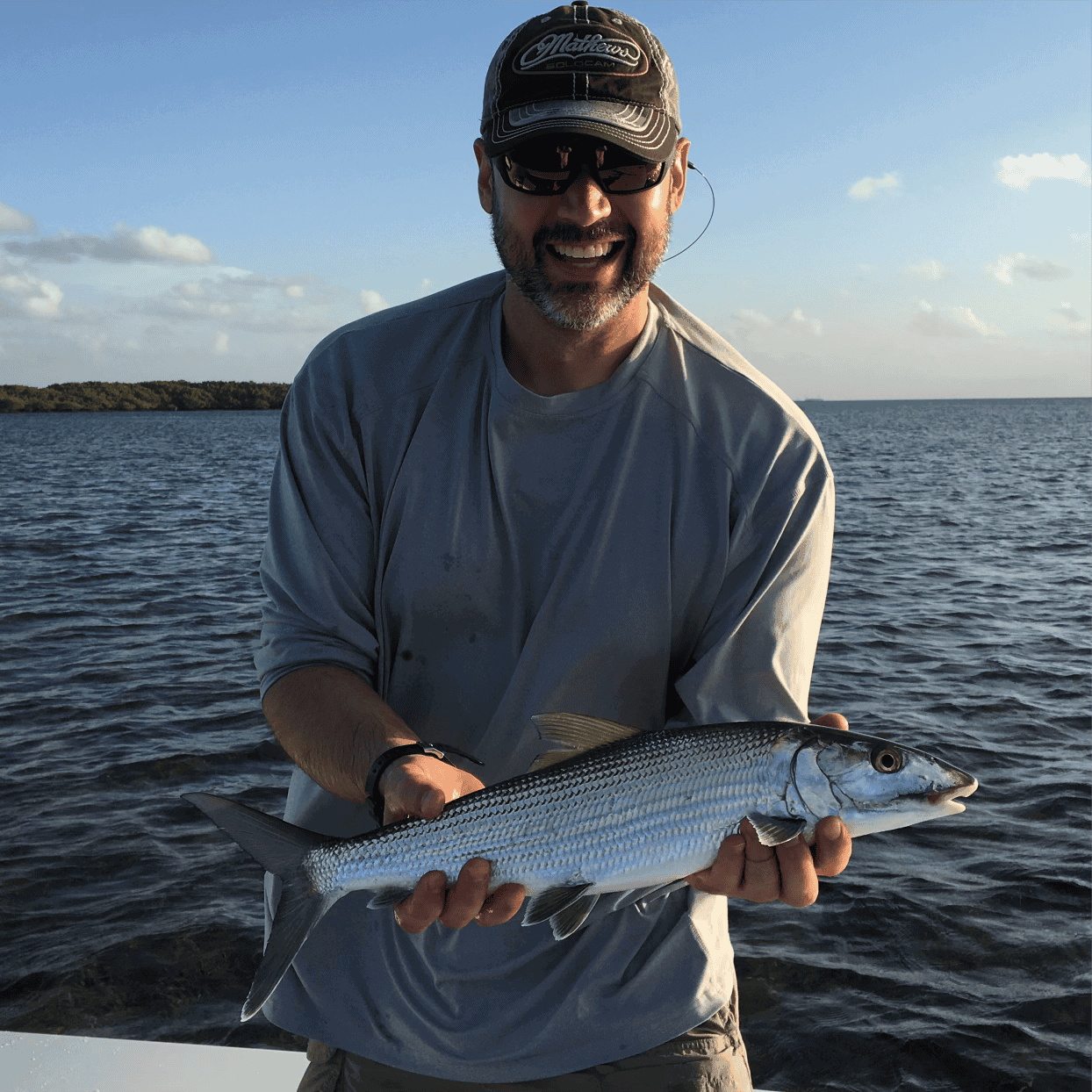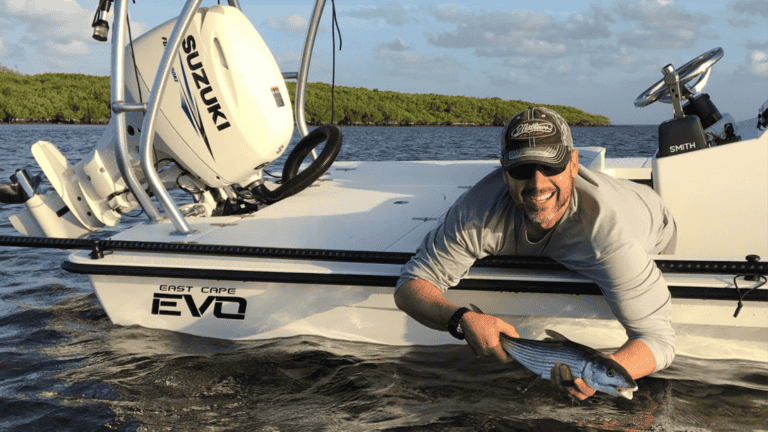Catching Bonefish: A 5-Point DIY Guide
Bonefish are among the most sought-after game fish for their elusive nature and the immense challenge they present.
They inhabit tropical and subtropical shallow flats and provide anglers with an exhilarating fishing experience.
This is your 5-point DIY guide to catching bonefish, detailing where and when to fish for them, and the ideal rod, reel, and tackle setup to enhance your chances of success.
Best Habitats for Catching Bonefish
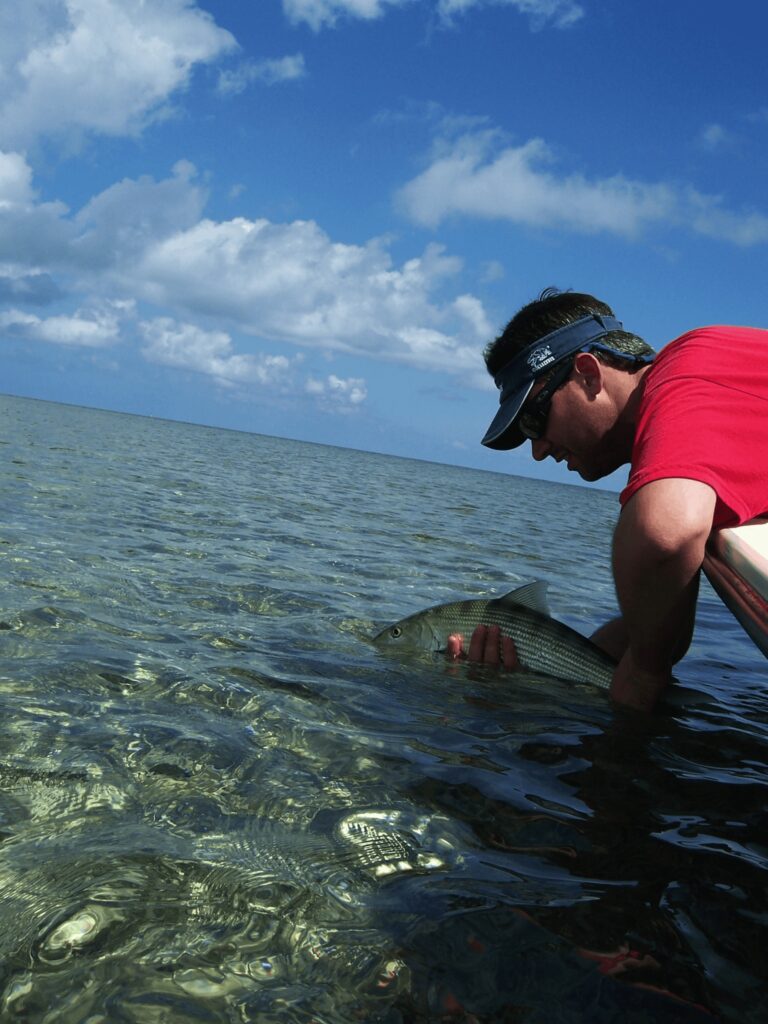
Bonefish are typically found in warm, shallow waters of tropical and subtropical regions.
Here are some prime locations:
1. Florida Keys: The flats of the Florida Keys, especially around Islamorada and Key West, are renowned for their bonefish populations. The crystal-clear waters provide excellent sight fishing opportunities.
2. Bahamas: With its extensive network of shallow flats, the Bahamas, particularly Andros Island and the Abaco Islands, offer some of the best bonefishing in the world.
3. Belize: The waters around Ambergris Caye and the Turneffe Atoll are rich in bonefish, making Belize a top destination.
4. Hawaii: The flats around Oahu, especially near Honolulu, are home to large bonefish, locally known as “o’io.”
5. Mexico: The Yucatan Peninsula, especially around Ascension Bay, is another excellent spot for bonefish.
6. Seychelles: For those looking for a more exotic location, the flats of the Seychelles, particularly around Alphonse Island, are a bonefishing paradise.
Best Times for Catching Bonefish
Timing is crucial when it comes to bonefishing.
Understanding the seasonal patterns and tidal movements can significantly improve your chances.
1. Seasonal Considerations:
- Winter (December to February): Warmer regions like the Florida Keys and the Bahamas are ideal during winter. Bonefish are more active and feed more aggressively in these areas.
- Spring (March to May): This is a prime time for bonefishing across most tropical regions. Warmer temperatures and abundant food sources make bonefish more active.
- Summer (June to August): While bonefishing can be good, extreme heat can sometimes make the fish less active. Early mornings and late afternoons are the best times to fish.
- Fall (September to November): Similar to spring, fall offers excellent bonefishing opportunities as water temperatures are ideal, and bonefish are actively feeding.
2. Tidal Movements:
- Incoming Tides: Bonefish often move onto the flats with the rising tide to feed. The influx of water brings baitfish and crustaceans onto the flats, attracting bonefish.
- Outgoing Tides: As the tide recedes, bonefish often move off the flats into deeper channels. Fishing the edges of flats during outgoing tides can be productive.
- High Tides: During high tides, bonefish can be found closer to mangroves and shoreline structures.
- Low Tides: Low tides concentrate bonefish in deeper pockets and channels on the flats.
The Ideal Rod, Reel, and Tackle Setup for Catching Bonefish

Fly Fishing Setup:
1. Rod:
- Length and Action: A 9-foot rod is ideal for bonefishing. It provides the right balance between casting distance and accuracy. A medium-fast to fast action rod is preferred for quick, precise casts.
- Weight: An 8-weight rod is the most versatile choice for bonefishing. It offers enough power to handle windy conditions and larger bonefish while remaining lightweight for all-day casting.
2. Reel:
- Drag System: A high-quality reel with a smooth, reliable drag system is essential. Bonefish are known for their powerful, long runs, so a reel with a strong drag is crucial.
- Arbor Size: A large arbor reel helps in quick line retrieval, which is important when a bonefish makes a long run.
- Line Capacity: Ensure your reel can hold at least 200 yards of backing. Bonefish can make long runs, and having ample backing is necessary to avoid losing the fish.
3. Line and Leader:
- Fly Line: A weight-forward floating line is ideal for bonefishing. It allows for accurate casts and easy line management on the flats.
- Leader: A 10-12 foot leader tapered to a 10-12 pound test is suitable. Bonefish have excellent eyesight, so a longer, thinner leader helps reduce visibility.
- Tippet: Fluorocarbon tippet is preferred due to its abrasion resistance and low visibility in water. A 10-12 pound test tippet is ideal for most bonefish situations.
4. Flies:
- Patterns: Some of the most effective bonefish flies include the Gotcha, Crazy Charlie, Clouser Minnow, and Bonefish Scampi. These flies imitate shrimp, crabs, and baitfish, which are primary food sources for bonefish.
- Colors: Tan, pink, and chartreuse are popular colors for bonefish flies. They mimic the natural prey found on the flats.
- Sizes: Sizes 4 to 8 are commonly used for bonefish flies. The size should match the local bait and water conditions.

Spinning Rod Setup:
1. Rod:
- Length and Action: A 7 to 7.5-foot medium-light to medium action spinning rod is ideal for bonefishing. This length provides a good balance of casting distance and control.
- Power: Medium-light power is preferred for sensitivity and control, yet strong enough to handle the powerful runs of bonefish.
2. Reel:
- Size: A 2500 to 3000 size spinning reel is suitable for bonefishing. It offers a good balance of capacity and weight.
- Drag System: A smooth and strong drag system is essential to handle the fast, long runs of bonefish.
- Line Capacity: Ensure the reel can hold at least 150 yards of 10-12 pound test braided line.
3. Line and Leader:
- Main Line: 10-12 pound test braided line is recommended for its strength and sensitivity.
- Leader: Use a 10-12 pound fluorocarbon leader to reduce visibility and provide abrasion resistance.
4. Lures:
- Soft Plastics: Soft plastic shrimp and crab imitations are effective. Choose natural colors like brown, tan, and pink.
- Jigs: Small jigs (1/8 to 1/4 ounce) in natural colors can mimic shrimp and crabs.
DIY Techniques for Catching Bonefish
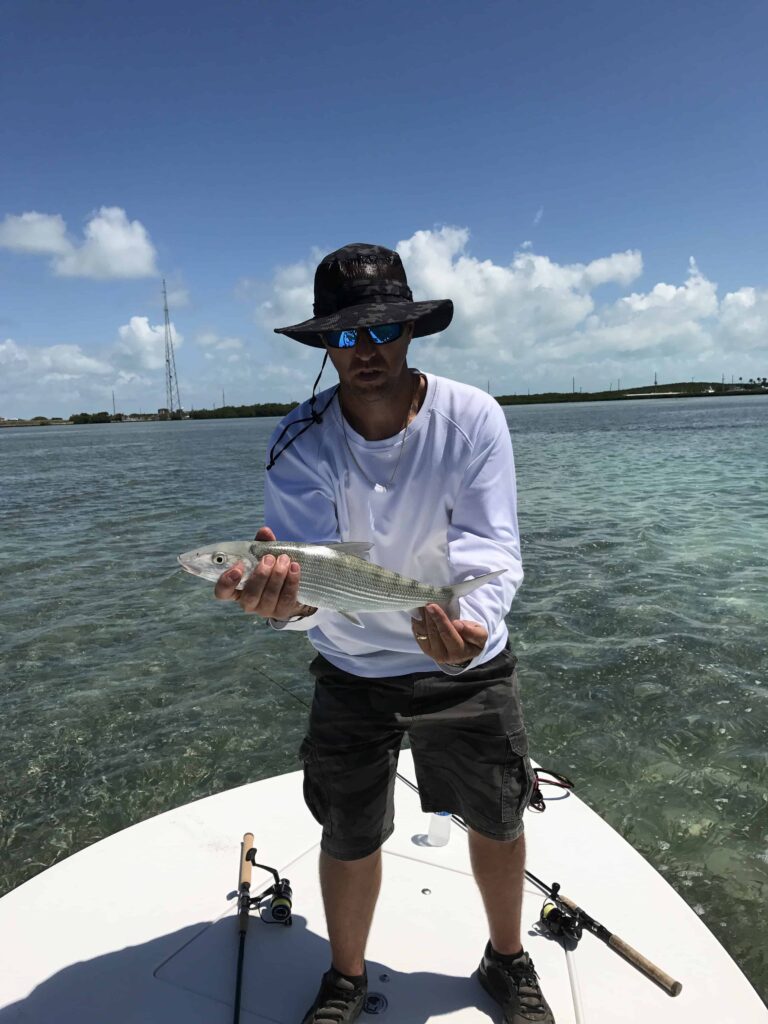
1. Sight Fishing:
- Polaroid Sunglasses: A good pair of polarized sunglasses is crucial for spotting bonefish. They reduce glare and allow you to see beneath the surface of the water.
- Scanning: Scan the water for signs of bonefish, such as tailing (when their tails break the surface as they feed) or mudding (when they stir up sediment on the bottom).
- Approach: Bonefish are incredibly wary. Approach the fish slowly and quietly, keeping a low profile to avoid spooking them.
2. Casting:
- Accuracy: Accurate casts are more important than distance in bonefishing. Practice casting to targets at various distances to improve your accuracy.
- Presentation: Aim to land your fly or lure a few feet in front of and beyond the fish. This allows you to strip the fly or retrieve the lure into the fish’s path without spooking it.
- Stripping: Use short, quick strips to mimic the movement of shrimp or baitfish. Vary your strip speed and length until you find what triggers a strike.
3. Hook Set:
- Strip Set: When fly fishing and you feel a bonefish take the fly, resist the urge to lift the rod. Instead, use a firm strip set by pulling the line sharply with your stripping hand. This drives the hook into the fish’s mouth.
- Reel Set: When using a spinning rod, wait until you feel the weight of the fish before setting the hook with a firm upward motion.
4. Playing and Landing:
- Playing the Fish: Bonefish are powerful fighters. Let the fish run and use the reel’s drag to control the fight. Apply side pressure to tire the fish more quickly.
- Landing: When the fish is ready to be landed, use a soft, wet hand or a rubberized landing net to handle the fish gently. Avoid handling the fish with dry hands, as this can damage its protective slime layer.
Essential Gear for Catching Bonefish
1. Clothing:
- Sun Protection: Lightweight, long-sleeved shirts and pants with UPF protection are essential for sun protection. A wide-brimmed hat and buff will protect your face and neck.
- Footwear: Sturdy wading boots or flats shoes protect your feet from sharp objects and provide good traction on slippery flats.
- Rain Gear: A lightweight, packable rain jacket is useful for sudden showers.
2. Accessories:
- Polarized Sunglasses: Invest in a high-quality pair of polarized sunglasses with amber or copper lenses for better contrast and visibility.
- Fly Box: A waterproof fly box with a good selection of bonefish flies in various sizes and colors.
- Line Clippers and Forceps: Essential tools for cutting line and removing hooks.
- Reel Pouch: Protect your reel from sand and saltwater with a reel pouch.
- Spare Leaders and Tippets: Always carry extra leaders and tippet material in case of break-offs or abrasion.
- Tackle Box: For spinning gear, a well-organized tackle box with various lures, jigs, and soft plastics is essential.
Conclusion
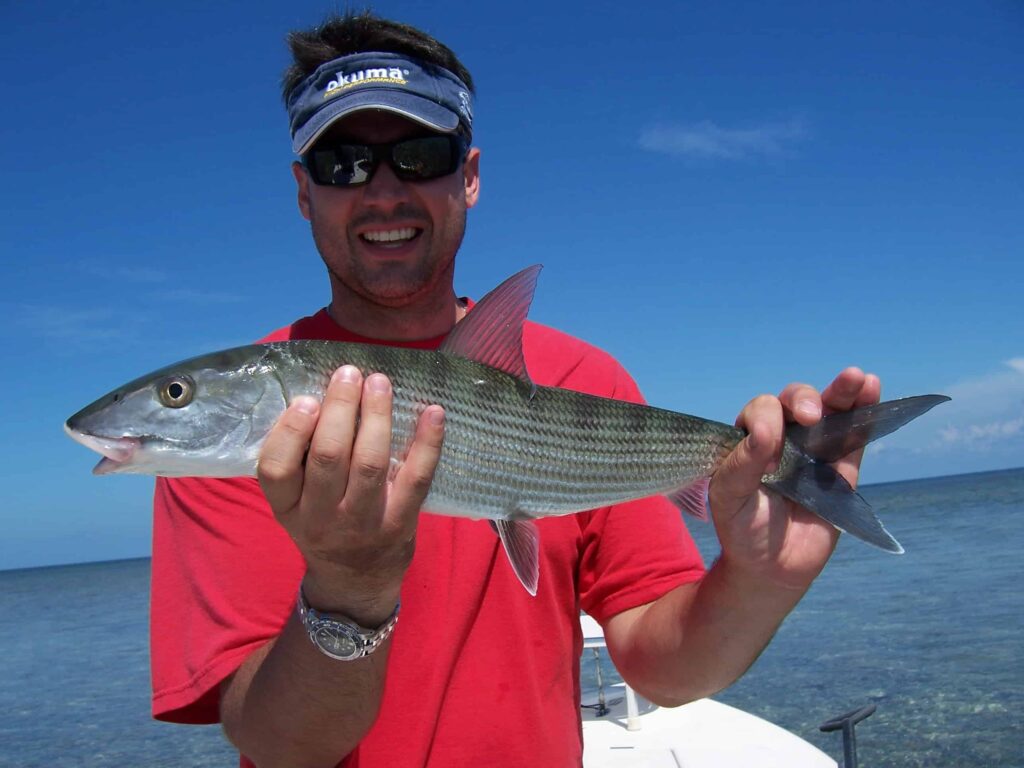
Catching bonefish is a rewarding experience requiring skill, patience, and the right equipment.
You can significantly increase your chances of success by understanding their habitats, timing your trips with the right seasons and tides, and using the proper rod, reel, and tackle setup.
This guide provided an overview of the techniques and gear needed to tackle catching bonefish on your next fishing trip.
Fly fishing or spinning; the key to successful bonefishing lies in careful observation, precise casting, and effective line management.
You know what to do next; head to the flats, and get busy catching bonefish.
Those photos of you where you’re heroically landing one of these monsters aren’t going to take themselves, and end up posted to Instagram on their own, are they?
Tight lines!

